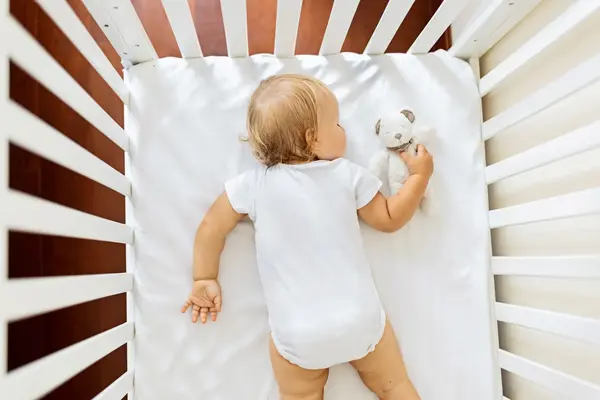Sleep
Is It Safe for Babies to Sleep in a Pack ‘N Play and for How Long?

A baby sleep in pack and play setup is a common solution for busy or traveling parents. These compact, portable play yards are often used for naps and nighttime sleep. When used correctly, they offer a safe and practical sleep environment for infants and toddlers. However, knowing how long and how safely a baby can sleep in one is essential for every caregiver.
What Makes Pack and Plays a Safe Sleep Option?
Pack and plays meet the safety standards set by the Consumer Product Safety Improvement Act (CPSIA). This makes them reliable for infant sleep. Many come with flat, firm mattresses and breathable mesh sides that help reduce suffocation risks.
Because of their size and portability, they work well for room sharing. Room sharing, recommended by the American Academy of Pediatrics, helps reduce SIDS by up to 50%.
How Long Can Babies Sleep in a Pack and Play?
Most pack and plays safely support babies up to 30 pounds or 35 inches tall. Once your baby reaches either limit, it’s time to transition. Ignoring these limits may increase the risk of falls or injury.
While some babies may outgrow them quickly, others may comfortably sleep in them up to 18 months. Always monitor growth closely and stop using once signs of outgrowing appear.
Pack and Play vs. Crib—Which One Works Better?
Both options are safe when used properly, but they serve different needs:
- Portability: Cribs are bulky. Pack and plays fold easily and travel well.
- Mattress size: Crib mattresses are thicker and more spacious.
- Versatility: Pack and plays often come with changing stations and play areas.
- Longevity: Cribs last longer but aren’t as flexible as a pack and play.
Choose based on your lifestyle. If you travel often or need flexibility, a pack and play is ideal for short-term use.
Tips to Keep Sleep Safe in a Pack and Play
Use Only the Original Mattress
Avoid adding extra padding or third-party mattresses. These can cause dangerous gaps and increase suffocation risks.
Keep the Sleep Space Bare
No pillows, toys, or loose blankets should be in the sleeping area. These items are choking and suffocation hazards.
Always Lay Baby on Their Back
Placing babies on their backs lowers SIDS risk. It’s the safest position for newborns and infants up to one year.
Lock All Sides Before Use
Before every nap or sleep session, make sure the frame is stable and all sides are locked properly.
Watch for Product Recalls
Regularly check the Consumer Product Safety Commission website for any product recalls or safety updates.
Are Attachments Like Bassinets or Changing Tables Safe?
Many pack and plays come with attachments like bassinets or changing stations. However, not all are safe for sleep. You should only use the bottom sleep area or full-size bassinets approved by the manufacturer.
Once your baby can roll over or push up, stop using bassinets. Transition them to the lower play area for better safety.
When to Transition Your Baby from a Pack and Play
It’s time to switch once your baby:
- Exceeds 30 pounds or 35 inches
- Starts climbing or standing unsupported
- Wakes up frequently due to discomfort
At that point, move to a crib or toddler bed for more space and comfort.
Frequently Asked Questions
- Can babies sleep in a pack and play overnight?
Yes. If you follow all safety guidelines and use the original mattress, overnight sleep is safe. - Are pack and play mattresses supposed to be hard?
Yes, firmness helps reduce suffocation risks. A firmer surface is safer for baby sleep. - Can I add blankets for warmth?
No. Instead, use a sleep sack or wearable blanket to keep your baby warm without loose fabric.
Final Thoughts
A baby sleep in pack and play environment can be both safe and convenient. Follow the weight and height limits, use only recommended accessories, and keep the sleep area clear. With the right setup, your baby can rest soundly while you enjoy peace of mind.
Explore more parenting tips and baby sleep news right here on our website!
